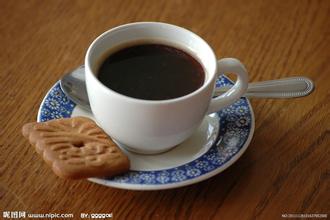Columbia Linglong Coffee Bean Flavor description method Variety characteristics Grinding scale Manor introduction
Columbia Linglong Coffee Bean Flavor description method Variety characteristics Grinding scale Manor introduction
Nalinglong province is closer to the equator, about one degree north latitude, with plenty of light throughout the year; the elevation is more than 1600 meters, and there are few snow peaks all the year round in the territory. Steep mountains and narrow steep slopes bring a warm and diverse climate. The warm and humid air rising from the canyon protects coffee grown at high altitude from frost, so that coffee can be grown smoothly at an altitude of 2300 meters. The volcanic soil provides rich nutrients for the growth of coffee and the annual rainfall in Nalinglong province is peaked, with a rainy season from October of that year to May of the following year, and the dry season lasts for June, July and August. However, even in dry months, coffee farmers will not worry too much, because the warm current caused by trade winds from the southern continent meets with cool nights to produce enough water vapor to replenish coffee trees. Thanks to this, Na Linglong's secret of quality has come to light.
The pure taste of Colombian coffee comes from Colombia's natural environment with the most favorable conditions for coffee growth. But beyond that, it is inseparable from the hard work of local growers. In Colombia, coffee cultivation has reached 1.07 million hectares, there are about 302000 coffee plantations in the country, and 30 to 40 per cent of the rural population depends directly on coffee production. Coffee workers go up the mountain to pick coffee beans (also known as coffee cherries) by hand, so they can pick carefully and pick the most ripe and full fruits. The vast majority of Colombian coffee beans are water-washed and moderately roasted with a light silky and sometimes sour taste, not as strong as Brazilian coffee and Italian Expresso, known as the "green gold" Colombian coffee has a silky texture. Colombian coffee is equated with high quality and good taste. It is sweet in acid, low in bitterness, rich in nutrition, with a unique sour and mellow taste, and the sour, bitter and sweet flavors of Colombian super coffee match well. Unique fragrance, after drinking, the aroma fills the whole mouth. Exhale the fragrance from the mouth again from the nose
Compared with other producing countries, Colombia is more concerned with developing products and promoting production. It is this, coupled with its superior geographical and climatic conditions, that makes Colombian coffee excellent in quality and delicious and famous all over the world. The status of coffee in Colombia is evident in the following example: all vehicles entering the country must be sprayed and sterilized so as not to inadvertently cause disease and damage coffee trees.
In addition, the export management of the coffee trade in Colombia is mainly the responsibility of the National Federation of Coffee owners. It is an unofficial industry organization with several government ministers as its members. Colombian law clearly stipulates that only private businessmen with federation licenses can export coffee, in order to maintain the image of Colombian coffee in the world, but also to ensure that the government receives stable revenue in the coffee trade.

Important Notice :
前街咖啡 FrontStreet Coffee has moved to new addredd:
FrontStreet Coffee Address: 315,Donghua East Road,GuangZhou
Tel:020 38364473
- Prev

Flavor and taste of coffee beans in Honduras introduction to the varieties of grinding calibration by regional treatment in manor
The flavor and taste of Honduran coffee beans are introduced in the coffee plantations, where coffee beans are picked by hand and processed carefully in order to produce better quality coffee beans because they are planted in mountainous areas. Honduras collects 3 million bags of coffee every year and provides you with multi-quality coffee, which has become one of the top ten coffees in the world.
- Next

Introduction to the characteristics of varieties treated with Panamanian Hartman honey for describing the flavor of coffee beans by grinding scale
Panamanian Hartman honey treatment coffee bean flavor description grinding scale method variety characteristics Panamanian endemic coffee is divided into small batches classified and numbered, small batches are designed to small capacity for optimal management, classification numbers enable buyers to understand and track the information of the whole process. Because of its small quantity, Panamanian coffee products are based on special coffee. The country to the countries of the world
Related
- Detailed explanation of Jadeite planting Land in Panamanian Jadeite Manor introduction to the grading system of Jadeite competitive bidding, Red bid, Green bid and Rose Summer
- Story of Coffee planting in Brenka region of Costa Rica Stonehenge Manor anaerobic heavy honey treatment of flavor mouth
- What's on the barrel of Blue Mountain Coffee beans?
- Can American coffee also pull flowers? How to use hot American style to pull out a good-looking pattern?
- Can you make a cold extract with coffee beans? What is the right proportion for cold-extracted coffee formula?
- Indonesian PWN Gold Mandrine Coffee Origin Features Flavor How to Chong? Mandolin coffee is American.
- A brief introduction to the flavor characteristics of Brazilian yellow bourbon coffee beans
- What is the effect of different water quality on the flavor of cold-extracted coffee? What kind of water is best for brewing coffee?
- Why do you think of Rose Summer whenever you mention Panamanian coffee?
- Introduction to the characteristics of authentic blue mountain coffee bean producing areas? What is the CIB Coffee Authority in Jamaica?

